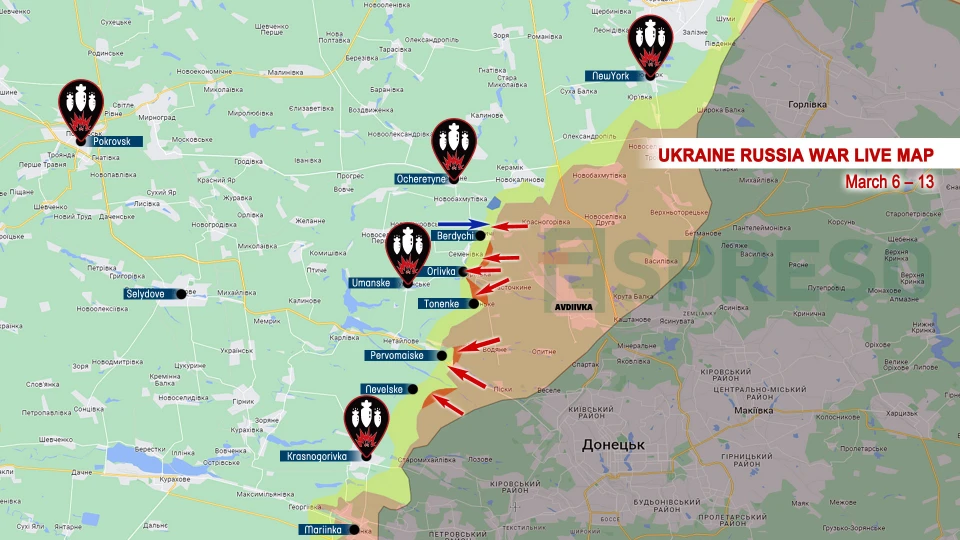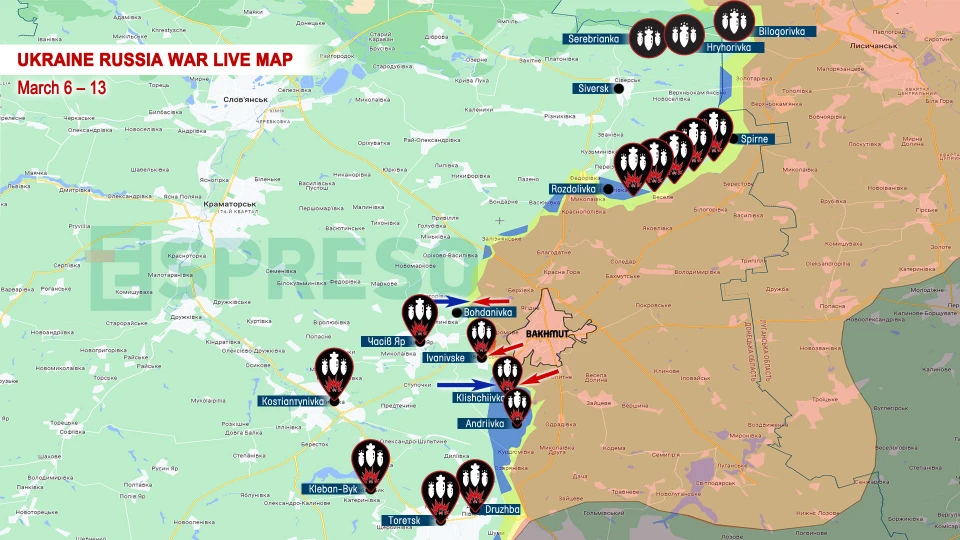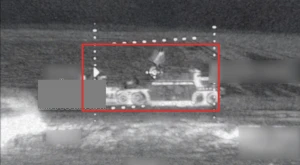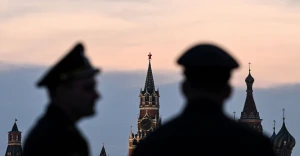
Russian aircraft downing, enemy mobilization, and boost in ammunition for Ukrainian Defense Forces. Serhiy Zgurets’ column
Today, we'll discuss the dynamics of combat operations and strategies to counter Russian attempts to target Ukrainian Armed Forces' helicopters, air defense systems, and HIMARS
Situation in the Donetsk direction
First, let's examine the front line, where Russian forces have been pressing their offensive in several directions since last October. The General Staff reported 79 combat clashes on March 13 alone, indicating a significantly high level of activity. The aggressor is striving to push forward in multiple segments of the front, focusing especially on areas to the west of Avdiivka and Marinka in the Donetsk region. Over the recent month, these directions have witnessed 60 reported Russian offensive actions. Concurrently, on March 14, British intelligence provided a “Captain Obvious” assessment of Russia’s forthcoming strategies. British intelligence officials state that it is very likely that the overall situation will be difficult for Ukrainian forces in the coming weeks as Russia continues to rebuild its forces and launch attacks in priority areas. These areas, according to British intelligence, are once again Avdiivka and Marinka.
This partly coincides with the statements of our military leadership, in particular, following the visit of Commander Oleksandr Syrskyi to several parts of the frontline. He says that Russian troops continue to carry out offensive actions, concentrating their main efforts in the areas of Terny, Berdychi, Tonenke, Ivanivske, Verbove and Robotyne. At the same time, probably due to the high level of losses, Russia’s activity in other areas has significantly decreased. However, according to Syrskyi, there is a threat of enemy units advancing deeper into Ukrainian combat formations. This likely concerns the Avdiivka direction, where Syrskyi was together with Defense Minister Umerov. Or, more precisely, all positions from Avdiivka along the defense line - Berdychi, Orlivka, Tonenke and Neverske.

The photo shows a map of the fighting: Avdiivka
The map remains largely unchanged, yet the defense line poses significant challenges due to Russia’s advantages in logistics, terrain elevation, including the strategic positioning of the coke plant, which lies partially along this defense line, and superiority in manpower, equipment, aviation, and artillery.
What does Ukraine's military leadership plan to do in response to these threats? Syrskyi said that the situation where two brigades are currently engaged is gradually becoming more complicated, and a decision has been made to strengthen these areas with reserves, brigades, ammunition, and electronic warfare equipment to further ensure the stability of our defense in this area of the front.
Rotations at the front
Syrskyi also visited the Zaporizhzhia direction today, and for the first time he mentioned the possibility of rotating units despite the difficult circumstances. He said that the rotation will help stabilize the situation and have a positive impact on the moral and psychological state of Ukrainian soldiers. This suggests that there are reserves that allow for such rotation, which is an extremely important statement, in my opinion. He also mentioned the situation in the Zaporizhzhia direction, where Russian troops are trying to put pressure on our defense near Robotyne and Verbove, but without much change.
Valentyn Badrak, Director of the Center for Army, Conversion and Disarmament Studies, military expert, believes that these are very important inputs and the events in Avdiivka are an example of this.
"Both Ukraine and Russia have no reserves. In fact, this is one of the reasons why the enemy groups were not able to build on their success: they had no reserves. But unfortunately, we had no reserves either, and we were unable to deploy them in time. We remember how the Third Assault Brigade was moved there at the last minute, but it was too late. What is important here is that the rotation is coming and this means that the reserves are coming," said the director of the Army Research Center.
Raids by anti-Putin Russian volunteers on Russia’s territory
Simultaneously, Russia is grappling with emerging challenges that, while not yet posing significant military threats, are generating considerable internal resonance, particularly amidst Putin's impending presidential reappointment. Fighting is currently unfolding in the border zones of the Russian Federation, where units from the Freedom of Russia Legion, the Russian Volunteer Corps, and the Siberian Battalion are actively engaged against the Putin regime. Presently, clashes are concentrated in three areas - the settlements of Kozinka and Spodariushino in the Belgorod region, and Tiotkino in the Kursk region.
There are a number of videos from these areas that show that the fighting is indeed ongoing, with armored vehicles and MLRS being used on both sides, and there have also been reports of the destruction of two ammunition warehouses in the Russian town of Tiotkino. This process is happening and we will wait to see how these Russian volunteers will continue to act, especially on Russia’s territory.
Downing of Russian aircraft, increase in ammunition and fortifications
Badrak spoke about his estimates for the near-term prospects for the front line.
"There are indeed indications of stabilization. Initially, there was a genuine and significant risk that the enemy could translate their tactical gains in the Andriivka direction into operational and tactical successes, potentially advancing into the operational depth. However, this scenario did not materialize, and I attribute this to the positive efforts, primarily of the air defense capabilities. The Ukrainian Air Force has executed a vital mission in neutralizing threats. We've witnessed the destruction of a dozen Su-34s, leading to a subsequent decrease in guided bombing attacks. However, it's important to recognize that no one can be considered immune to such threats over an extended period," Badrak explained.
He recalled how in February Ukrainian defenders, in particular in Avdiivka, suffered from a shortage of ammunition, but now the situation has stabilized: "As I understand it, 170,000 rounds of ammunition from the EU, which were promised and produced, are actually in the process of being transferred and mastered, and we are also expecting 800,000 from the so-called Czech initiative."
The military expert emphasized that one of the key points is the creation of fortifications.
"Unfortunately, the same mistake was repeated near Avdiivka as in Bakhmut, when there was no defense line behind it. Now there are reports that a huge defense line is being built, that the government has already engaged civilian companies. This gives us an opportunity to talk about stabilization, although, of course, all these issues and the ammunition issue and their production, preparation of reserves - there is a lag of almost a year and a half, because we expected these decisions to be made somewhere around the late fall of 2022, when it became clear that the enemy began to put pressure on Bakhmut," he said.

The situation became particularly acute on January 7, 2023, but there were no appropriate decisions, Badrak added.
Loss of two Mi-17 helicopters
"We have been observing this positional hunting for almost two weeks now,and regrettably, we've experienced our first loss of a HIMARS unit in a year and a half. Regarding yesterday's reports and videos about the alleged loss of two Mi-17 helicopters, there's growing skepticism among many, possibly due to certain inconsistencies observed by experts. Specifically, some have noted that in the initial footage, the helicopter blades were seen spinning upon landing, while in subsequent images, they appear completely still, suggesting a static scene. Experts say that this may be staged, although I will not argue here," the expert explained.
According to him, the rise in Ukrainian losses is attributed to the enhanced capabilities of Russian intelligence. Specifically, he mentions the SuperCam drone, boasting a wingspan of 3.5 meters, operating at an altitude of 5 km, and covering distances of up to 240 km.
"The critical point here, as outlined by analysts, particularly those from Russian propaganda channels, is that the incident happened approximately 46 kilometers from the contact zone. Considering the HIMARS incident, where the distance was around 40 km, and HIMARS remained in position for some time, we draw parallels here. While the explanation provided suggests they were awaiting refueling, the key takeaway for us is the notable reduction in the time between the detection of Ukrainian equipment and the initiation of fire to neutralize it. This signifies a significant improvement in enemy intelligence capabilities, coupled with the utilization of more destructive weaponry. This necessitates very close monitoring not only in the contact zone, but also at such long distances," summarized the director of the Center for Army, Conversion and Disarmament Studies.
At the same time, the Ukrainian Defense Forces demonstrate powerful capabilities, and in fact, according to Badrak, this positional hunting began after the destruction of the A-50U long-range radar detection and control aircraft in Russia. Except for the destruction of Russian Black Sea Fleet ships: "This has become a continuous, systematic process and certainly allows us to say that the Black Sea Fleet will one day cease to exist, as it is trapped in the closed Black Sea."
Mobilization in Russia
Badrak believes that even a million-strong mobilization will not allow Russia to prepare units very quickly, as it takes some time and a significant number of training centers.
"At the end of 2022, they began to create such centers on the basis of various educational institutions and added two dozen special centers, used Belarusian centers, but they still have a big problem with training personnel. I would like to remind you that during the so-called hearings at the end of October 2023, Russian experts themselves determined that they needed up to 12 months to train and fully coordinate the units. They don't have that kind of time, and based on the events in Avdiivka, when they didn't have enough reserves to build on their success, I conclude that they didn't have the personnel ready. Perhaps they will accelerate their training in some way, but it is still a limited capability," he said.
The expert reminded that Russia has mothballed 25% to 40% of its armored mobilization reserves, and it is old equipment.
"This means that they will still have significant problems with equipment. Moreover, the issue of using armored vehicles and personnel - the latest case was last week, when after a long period of time when the equipment was not used for assaults, such an assault was carried out with the participation of 18 units of armored vehicles of various types: tanks, armored personnel carriers, infantry fighting vehicles, and 16 of the 18 were destroyed by the Ukrainian Defense Forces. This means that the enemy still has significant difficulties, but they are better at strategic adaptation, so we need to work not only on the front line, but also in international areas and with our own weapons and armor production," summarized the director of the Center for Army, Conversion and Disarmament Studies.
- News














































